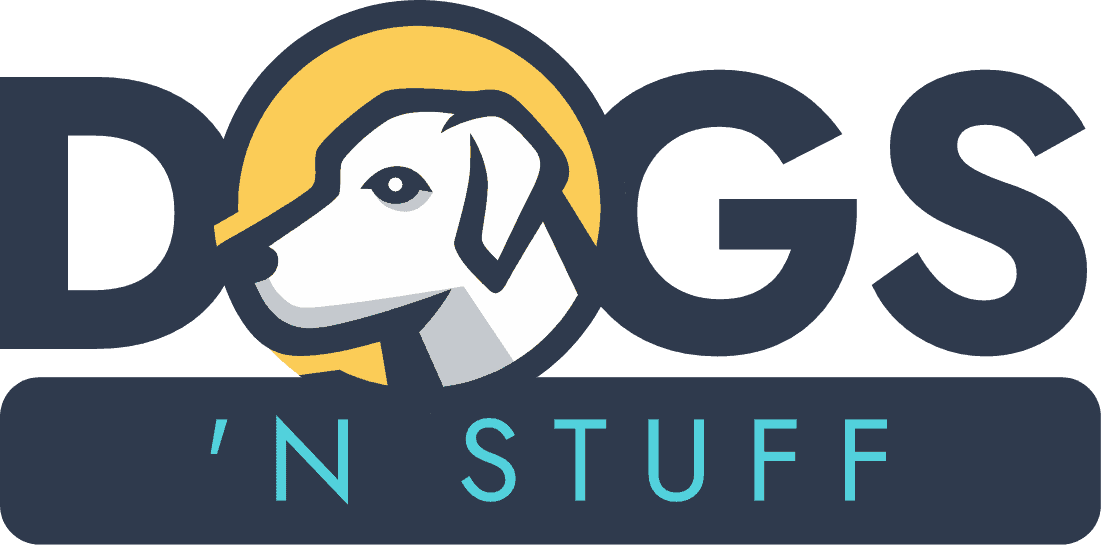Just like humans, dogs don’t like lots of loud noises. The ears of a dog are far more sensitive than those of people, so some noises may seem a lot louder to them than they do to us.
Amazingly, dogs can hear sounds that are four times farther away than a human being can hear.
Dogs can also hear pitched sounds that humans can’t, and they can detect a frequency range of 67-45,000 Hz, compared to the human range of 64-23,000 Hz.
This means that a clap of thunder sounds much louder to them than it does to us.
Almost all dog owners will have seen their precious pooch cower in fear when a certain noise is made.
It’s terrible seeing your poor little dog looking terrified, especially when we can’t do much about the noise that’s causing their distress.
By understanding which are the most common sounds that dogs don’t like, we can better support them when they happen.
Table of Contents
1. Fireworks

Fireworks are one of the most commonly known noises that scare dogs.
As fireworks are essentially just a series of loud bangs, whizzes and crackles, it’s no wonder these strange noises frighten our dogs.
Firework displays often last long into a dark night and will be set off on special holidays; so, it’s easier for us to troubleshoot when it will happen and support our dogs through it.
There are a few things you can do to ease your dog’s fear and stop them from suffering as much.
Begin by stocking up on some of your dog’s favorite treats to help distract them from the sound.
Then make sure that all of your windows, blinds, and drapes are tightly closed.
Have a few blankets to hand for your pooch to snuggle into and give them lots of hugs and attention throughout the evening.
You can also speak to your vet or local pet store about calming scented products they have, that help calm pets during difficult times.
2. Vacuuming

A lot of dogs seem to be really confused as to the purpose of a vacuum cleaner, and the noise and suction action they make can send them into a frenzy of fear!
Some dogs will run and hide when the vacuum comes out, whereas other dogs may begin barking and even biting at it.
The best thing to do when vacuuming is to place your pooch in your yard, or if that isn’t possible, into a room in the house, farthest away from the area you are vacuuming.
3. Bubble cushion wrap

It may be the crackling sound of the plastic, or the repetitive pop when you squeeze it, but whatever the reason is, there are so many dogs that really hate bubble cushion wrap.
If you’ve ever noticed your pooch cowering in a corner when you unpack a parcel, then try opening your packages in a room, tucked away from where your dog is.
You should also make sure to dispose of or store any bubble cushion wrap in a closed cupboard up high so that your dog won’t accidentally stumble across it and get a fright.
4. Balloons

It’s common for dogs to feel uncomfortable around balloons.
They don’t much like the static that comes off them, and just like humans, they don’t like balloons popping too near to them.
If you are throwing a party or celebration, consider your dog’s feelings, and think about using decorations that don’t involve balloons.
5. Thunderstorms

As we mentioned before, a dog’s hearing is almost four times as amplified as humans.
Thunder sounds a lot louder to them than it does to us, so it’s no wonder they are terrified of it.
Similar to when there is a firework display, close all the windows and drapes, and snuggle up next to your dog.
Give them lots of love and attention and talk softly to them until the storm passes.
6. Sirens
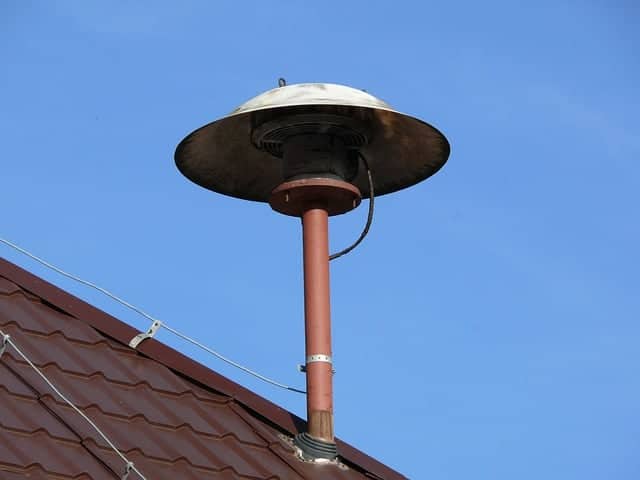
Any kind of siren used by an emergency service can set your dog off.
Whether it’s a police siren, or that or an ambulance or from the fire department; most dogs do not like this sound.
Thankfully, as these brave heroes are off to an emergency, the noise of their sirens is often fast and fleeting, and over pretty quickly.
7. Laundry washing machine

The older the washing machine, the louder the noise it makes.
However, it isn’t often feasible to simply buy a new one! Instead, think about putting the laundry on and then taking your dog out for a long walk for the duration of the wash.
That way, the load of clothes will be finished by the time you return home, and your dog won’t ever know it was switched on.
Noise Anxiety in Dogs
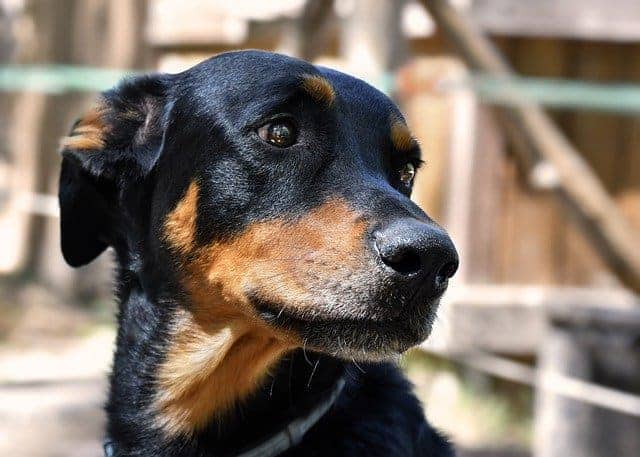
Noise anxiety is also known as noise phobia or noise sensitivity in dogs.
A large number of dogs have this behavior, and some breeds are more prone to it than others.
You might think that being sensitive to loud or sudden noises is normal for dogs since their ears are more sensitive than ours, but not all dogs exhibit this behavior.
There are theories regarding noise anxiety in dogs as being a learned behavior and being genetic.
Some also believe that it is a combination of both.
The severity levels of this behavior in canines vary. Although some breeds are more prone to it than others, this does not mean that all dogs under a specific breed suffer from it.
It just means that the specific breed can produce more individuals that are sensitive to loud and sudden noises.
This sensitivity can work positively or negatively for each dog.
It can mean they have a sharp hearing as well as can get easily agitated when there is a loud or sudden noise.
Dog Noise Anxiety Symptoms

Symptoms vary depending on how severe the effect of the phobia is.
The less severe signs of anxiety include, but are not limited to:
• uncontrollable trembling
• panting
• excessive drooling
• laid down ears (for dogs with standing ears)
• wide-eyed expression
• clinginess
Severe reactions to loud or sudden noises may include the following:
• cowering in fear
• a seemingly catatonic state
• actively seeking shelter or hiding
• whining and other vocalizations
• running around or vigorous pacing
• trying to escape from the house or go somewhere less noisy
• scratching on the door
• chewing randomly and excessively
• urinating uncontrollably
• defecating
These symptoms may seem totally random if you do not understand why your dog is acting this way.
Once you recognize these as signs of noise anxiety in dogs, you are on your way to helping your furbaby feel better.
The more severe symptoms can be dangerous for you and your dog.
Some dogs might perceive you as a threat if they are panicked or scared.
The scratching, bolting, and random chewing can also lead to injury for your dog.
Causes of Noise Anxiety
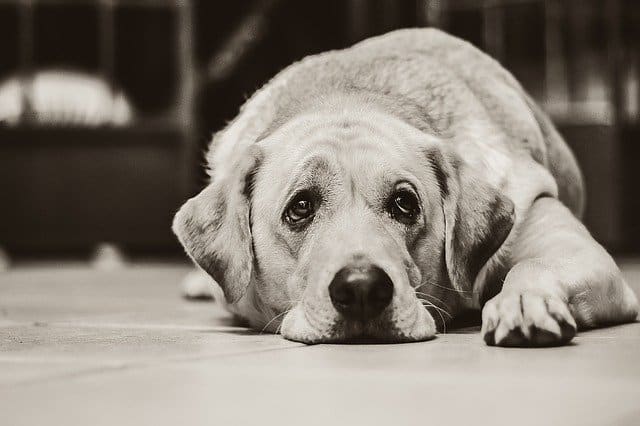
The causes of this anxious behavior are loud or sudden noises which may or may not include physical harm to your dog.
The most common triggers are fireworks, thunderclaps, gunshots, and some loud bangs from things that fall.
It is easy to understand how our dogs may be surprised or frightened by sudden loud noises, even children and adults can be startled once in a while.
In dogs with sensitivity to loud or sudden noises, their reaction can be prolonged and upsetting for the owner.
Speaking of the owner, experts recommend that you remain calm and composed when your dog goes through anxiety.
Our canine buddies often take cues from their human family and how we react can affect them.
If you show anxiety and panic every time he feels frightened or scared due to noise, your dog is likely to react the same way.
Be calm and caring when he is seeking solace from you.
Once your dog sees that you are not panicked or scared, he might also calm down and feel less anxious.
Genetic predisposition to anxiety due to loud or sudden noises appears in breeds like the German Shepherd, Collie, and Golden Retriever.
Dogs hear better than humans with a wider range of low and high frequencies. This makes them more sensitive to loud noises.
When this negative reaction is not treated or addressed, it can lead to severe symptoms.
5 Ways to Treat Noise Anxiety in Dogs
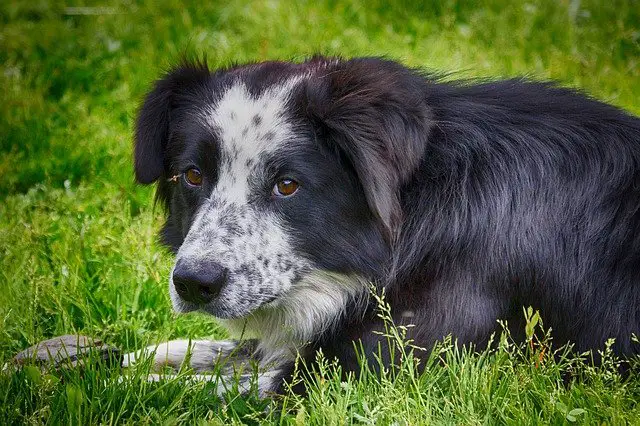
Different methods for treating noise anxiety in dogs work for different dogs.
It is best to consult a vet before you start any form of treatment.
Your vet may be able to help diagnose the severity of your dog’s anxiety.
By doing this, the vet can also recommend the method that can work for your dog specifically.
There are different ways to treat this form of anxiety. Some are easy to do while others may be time-consuming and expensive.
1. Comfortable Changes
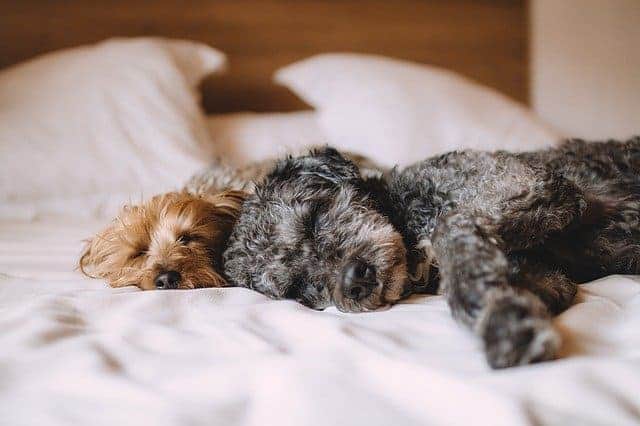
Here are some ways to remedy the situation if you anticipate a fireworks display or a thunderstorm coming.
Create a safe and comfortable space for your dog. If you provide a kennel for your dog, cover it with a thick blanket can muffle the loud sounds.
Provide a space for your dog to poke through, like a flap, so he can have a look around when he feels better.
Get rid of your dog’s excess energy. A few days before a fireworks display or a possible thunderstorm, increase your dog’s exercise so he will not have excess energy that could contribute to more anxiety.
Play white noise to cover the offensive noise. Open a tv show or loud enough music to mask most of the thunderstorm or fireworks noise.
Allow your dog to stay with you during this upsetting period. Sometimes all he might need is your calming, reassuring presence.
Use a pressure wrap. This is equivalent to a weighted blanket, in terms of making us feel secure and comfortable. It is a vest or wrap that your dog can wear, that provides a subtle but consistent pressure, akin to a hug.
2. Desensitization

Some dogs might be open to “learning” how to be comfortable with the noises that startle them.
Desensitization is a method of making your dog used to the noises that he is frightened of.
The following steps can help your dog get used to the noise.
- With the use of a recording, play the beginnings of a thunderstorm in a low setting. (rain and thunder rolls)
- Observe your dog’s reaction to the stimulus. Play the noise for several minutes each day at random times.
- Slowly increase the volume of the recording every two days.
- Include thunderclaps to the sounds that you play. Start with the volume setting on low.
- Observe your dog’s reaction. Increase the volume every two days or according to how comfortable your dog is with the present sound level.
3. Counterconditioning

This method tries to reinforce a positive association with the negative stimulus.
For example, when the clouds become dark and the rain starts to pour, you can give your dog treats every few minutes.
Do not rush the dispensing of treats or you will end up with an overweight dog.
Be calm and positive when you give treats. This method is usually more effective when done during puppyhood.
4. Medication
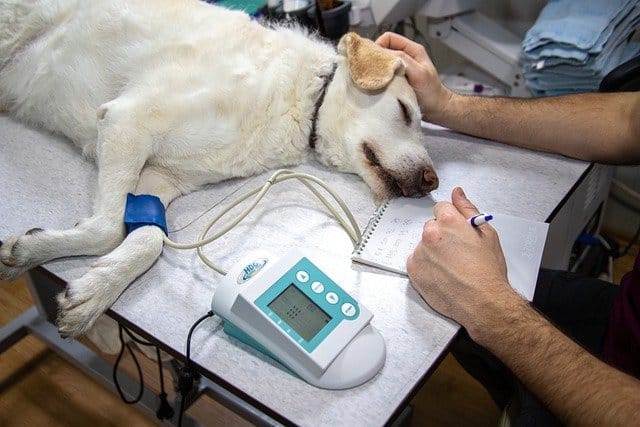
Medication that can calm your dog is an option if your dog’s symptoms are severe.
Consult your vet regarding whether your dog’s symptoms are severe enough to warrant the use of medication.
5. Natural Remedies
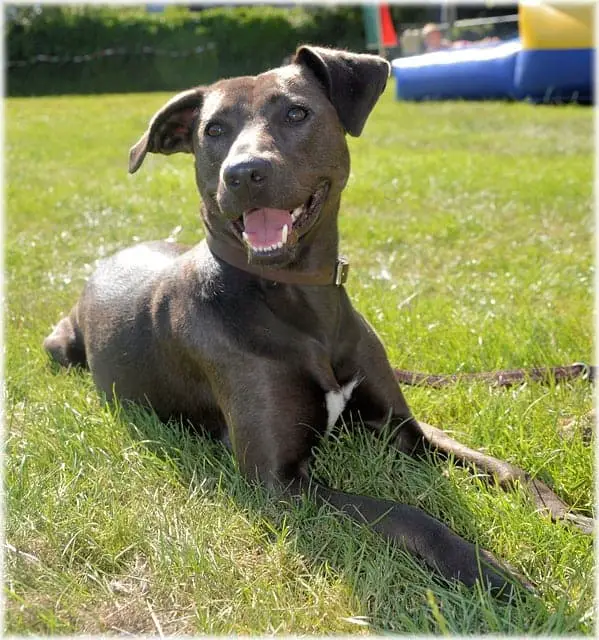
Some botanical remedies work effectively to calm a dog down.
If you are worried about the effect of medication on your dog, you might want to try this out first.
